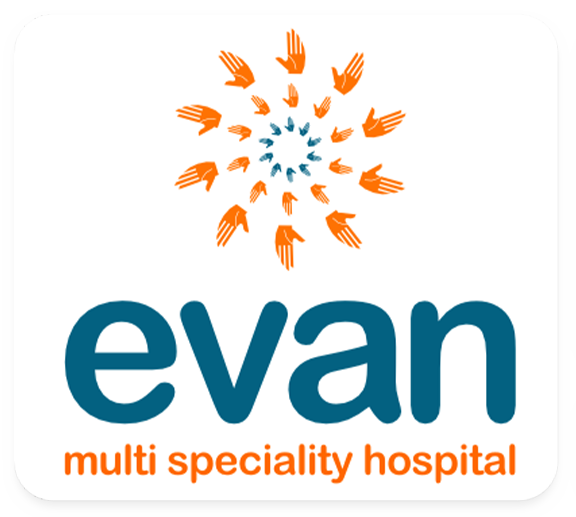diagnosis, treatment, and management of
The Ear, Nose, and Throat (ENT)
The Ear, Nose, and Throat (ENT) department, also known as the Otolaryngology department, in Evan Hospital specializes in the diagnosis, treatment, and management of diseases and disorders affecting the ear, nose, throat, head, and neck regions. ENT specialists, known as otolaryngologists, along with audiologists, speech therapists, and other healthcare professionals, provide comprehensive care for both pediatric and adult patients. Here is a detailed description of the components and services typically found in an ENT department:
1. Diagnostic Services:
- Audiology: Comprehensive hearing assessments, including audiometry, tympanometry, and auditory brainstem response (ABR) testing to diagnose hearing loss and other auditory disorders.
- Imaging Studies: Use of CT scans, MRIs, and X-rays to visualize structures of the ear, nose, throat, and neck for accurate diagnosis of conditions like sinusitis, tumors, and structural abnormalities.
- Endoscopy: Nasal endoscopy, laryngoscopy, and otoscopy to visually inspect the nasal passages, throat, and ears, often performed with flexible or rigid scopes.
2. Ear (Otolaryngology) Services:
- Hearing Loss: Diagnosis and management of conductive and sensorineural hearing loss, including fitting of hearing aids and cochlear implants.
- Ear Infections: Treatment of acute and chronic otitis media (middle ear infections) and otitis externa (outer ear infections).
- Balance Disorders: Evaluation and treatment of vertigo, dizziness, and other balance disorders, often involving vestibular rehabilitation.
- Tinnitus Management: Diagnosis and treatment of tinnitus (ringing in the ears), including sound therapy and counseling.
3. Nose (Rhinology) Services:
- Sinus Disorders: Management of acute and chronic sinusitis, including medical therapy and surgical interventions like functional endoscopic sinus surgery (FESS).
- Allergy Treatment: Diagnosis and treatment of nasal allergies, including allergy testing, immunotherapy (allergy shots), and medication management.
- Nasal Obstruction: Treatment of nasal obstructions due to deviated septum, nasal polyps, and turbinate hypertrophy, often involving surgical correction.
- Rhinoplasty: Cosmetic and functional nasal surgery to improve appearance and breathing function.
4. Throat (Laryngology) Services:
- Voice Disorders: Evaluation and treatment of voice disorders, including hoarseness, vocal cord nodules, and polyps, with options like voice therapy and phonosurgery.
- Swallowing Disorders: Diagnosis and management of dysphagia (difficulty swallowing) through swallow studies, therapy, and surgical intervention if needed.
- Throat Infections: Treatment of tonsillitis, pharyngitis, and other infections of the throat, including tonsillectomy and adenoidectomy when necessary.
- Sleep Apnea: Evaluation and treatment of obstructive sleep apnea, including surgical options like uvulopalatopharyngoplasty (UPPP) and non-surgical treatments such as CPAP.
5. Head and Neck Services:
- Head and Neck Cancer: Diagnosis, staging, and treatment of cancers of the head and neck region, including surgery, radiation therapy, and chemotherapy.
- Thyroid and Parathyroid Disorders: Surgical and medical management of thyroid nodules, goiters, thyroid cancer, and parathyroid gland disorders.
- Salivary Gland Disorders: Treatment of salivary gland infections, stones, and tumors, often involving sialendoscopy or gland excision.
- Reconstructive Surgery: Reconstructive procedures following trauma, cancer surgery, or congenital deformities to restore function and appearance.
6. Pediatric ENT Services:
- Pediatric Hearing Loss: Diagnosis and treatment of congenital and acquired hearing loss in children, including auditory brainstem response (ABR) testing and cochlear implants.
- Pediatric Infections: Management of recurrent ear infections, tonsillitis, and adenoiditis, including ear tube placement and tonsillectomy/adenoidectomy.
- Airway Disorders: Evaluation and treatment of pediatric airway disorders such as laryngomalacia, tracheomalacia, and subglottic stenosis.
- Speech and Language Disorders: Collaboration with speech therapists to address speech and language delays and disorders in children.
7. Surgical Services:
- Microsurgery: Use of advanced microscopes for precise surgical procedures on the delicate structures of the ear, nose, and throat.
- Minimally Invasive Surgery: Endoscopic and robotic-assisted surgeries to reduce recovery time and improve outcomes for patients.
- Reconstructive Surgery: Procedures to reconstruct and restore function and appearance following injury, cancer resection, or congenital defects.
8. Multidisciplinary Collaboration:
- The ENT department often collaborates with other specialties such as audiology, speech-language pathology, oncology, allergy and immunology, and pulmonology to provide comprehensive care.
- Multidisciplinary teams meet regularly to discuss complex cases and coordinate treatment plans.
9. Patient Education and Counseling:
- The department provides extensive education and counseling for patients and their families regarding their conditions, treatment options, and postoperative care.
- Programs and workshops may be offered to help patients manage chronic conditions like tinnitus, allergies, and voice disorders.
10. Research and Education:
- The ENT department often engages in clinical research to advance the understanding and treatment of ear, nose, and throat conditions.
- Participation in clinical trials, development of new surgical techniques, and investigation of innovative treatments are common.
- The department also plays a crucial role in the education and training of medical students, residents, and fellows through academic programs and hands-on clinical experience.
Overall, the ENT department in hospitals provides comprehensive care for a wide range of conditions affecting the ear, nose, throat, head, and neck, employing advanced diagnostic and therapeutic techniques to improve patient outcomes and quality of life.
